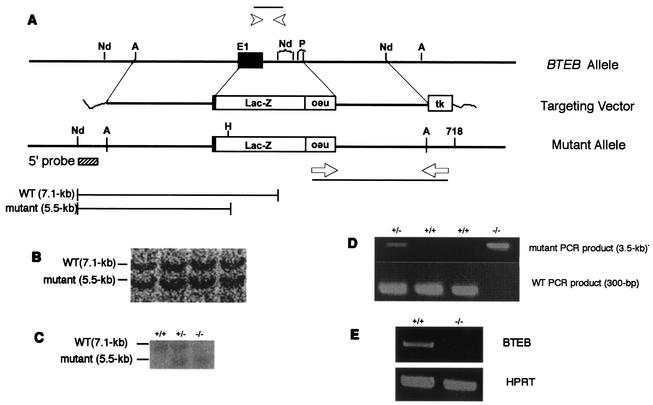FIG. 1.
Mutation of mouse BTEB gene. (A) Outline of targeting vector and restriction maps around the first exon. Arrowheads indicate the sites of primers used to distinguish the wild-type BTEB gene from that of the mutant. neo indicates the neomycin-resistant gene, and tk is the thymidine kinase gene under the control of the herpes simplex virus promoter. The sizes of the DNA fragments digested with NdeI are shown below. (B and C) DNA blot analysis of DNA from recombinant cells and mouse tails, respectively. Genomic DNAs were prepared from ES cells and mouse tail, digested with NdeI and HindIII, and electrophoresed in 1% agarose, followed by hybridization with the 5′ probe indicated in panel A. (D) Genotyping of the BTEB locus from offspring. PCR analyses were carried out with genomic DNAs from offspring generated by cross-mating heterozygous BTEB+/− mice. The primer pairs were used as described in panel A, and the PCR products were analyzed by agarose gel electrophoresis. (E) RT-PCR analyses of BTEB mRNA expression. RNAs were prepared from the brains of wild-type and mutant mice. RT-PCR of the prepared RNAs was performed with a pair of primers as described in Materials and Methods, and the RT-PCR products were separated by agarose gel electrophoresis. hypoxanthine phosphoribosyltransferase (HPRT) mRNA expression was used as control.

